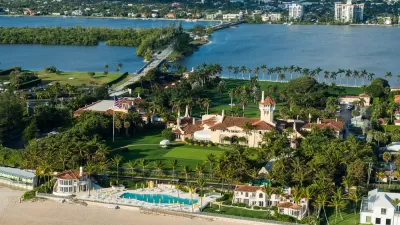A tax break designed to protect land has become just another massive tax loophole. It looks like conservation easements are here to stay.

Peter Elkind reports on the details of an underappreciated mechanism of the U.S. tax structure that relates to land use, i.e., conservation easements.
The idea seems like the perfect marriage of environmentalism and capitalism: Landowners give up their right to develop a piece of property, and in exchange they receive a special tax deduction. Nature is preserved and everybody benefits.
According to Elkind, conservation easements worked in many examples, but at some point conservation easements became motivated more by commercial reward than for any concern about the natural environment. Elkind recounts the story of the former Millstone Golf Course outside of Greenville, South Carolina, closed in 2006 and dormant until 2016.
Later in 2016, however, a pair of promoters appeared. They gathered investors who purchased the same parcel at the market price and, with the help of a private appraiser, declared it to be worth $41 million, nearly eight times its purchase price. Why? Because with that new valuation and a bit of paperwork, the investors were suddenly able to claim a tax deduction of $4 for each $1 they invested.
According to Elkind, those kinds of transactions have transformed conservation easements into the "single most generous charitable deduction in the tax code." If you're wondering whether it survived the Republican tax reform bill signed recently by the president, it did, according to Elkind. Moreover, President Trump has a long history of building tax shelters by using conservation easements.
The article includes a lot more examples and explanations to describe the tax shelter conservation easements have become.
FULL STORY: The Billion-Dollar Loophole

Planetizen Federal Action Tracker
A weekly monitor of how Trump’s orders and actions are impacting planners and planning in America.

San Francisco's School District Spent $105M To Build Affordable Housing for Teachers — And That's Just the Beginning
SFUSD joins a growing list of school districts using their land holdings to address housing affordability challenges faced by their own employees.

The Tiny, Adorable $7,000 Car Turning Japan Onto EVs
The single seat Mibot charges from a regular plug as quickly as an iPad, and is about half the price of an average EV.

With Protected Lanes, 460% More People Commute by Bike
For those needing more ammo, more data proving what we already knew is here.

In More Metros Than You’d Think, Suburbs are Now More Expensive Than the City
If you're moving to the burbs to save on square footage, data shows you should think again.

The States Losing Rural Delivery Rooms at an Alarming Pace
In some states, as few as 9% of rural hospitals still deliver babies. As a result, rising pre-term births, no adequate pre-term care and "harrowing" close calls are a growing reality.
Urban Design for Planners 1: Software Tools
This six-course series explores essential urban design concepts using open source software and equips planners with the tools they need to participate fully in the urban design process.
Planning for Universal Design
Learn the tools for implementing Universal Design in planning regulations.
Smith Gee Studio
City of Charlotte
City of Camden Redevelopment Agency
City of Astoria
Transportation Research & Education Center (TREC) at Portland State University
US High Speed Rail Association
City of Camden Redevelopment Agency
Municipality of Princeton (NJ)





























